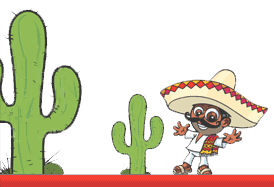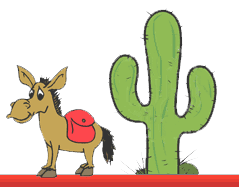People receiving a double dose of naloxone are no more likely to survive an opioid overdose than people receiving a standard, 4-milligram nasal spray, according to a new study.
The new paper, published Thursday in the Centers for Disease Control and Prevention’s Morbidity and Mortality Weekly Report, showed no significant difference in survival rates between people who were revived using 4- and 8-milligram sprays of naloxone, commonly known by the brand name Narcan. People receiving the smaller dose also did not require a higher total number of sprays, despite having received just half the initial amount. The researchers found only one major contrast between those receiving different dose sizes: Those who received a double dose were over 2.5 times more likely to experience severe withdrawal symptoms, like vomiting.
The study comes as pharmaceutical companies continue to market expensive high-dose formulations of naloxone, arguing that amid record drug death levels resulting from potent synthetic opioids like fentanyl, it’s essential to deliver as much of the overdose-reversal medication as possible. Public health experts and harm-reduction groups have pushed back, however, charging that the companies have used Americans’ fear of fentanyl as an excuse to sell needlessly expensive naloxone products to cash-strapped public health agencies.
“For-profit pharma has been trying to wring profits from this public health emergency for years,” said Michael Hufford, the CEO of a nonprofit naloxone manufacturer, Harm Reduction Therapeutics. “It reminds me of the quote from Upton Sinclair: ‘It is difficult to get a man to understand something, when his salary depends on his not understanding it.’ Most recently, sales reps have been pushing buyers to purchase high-dose naloxone products, despite knowing that more naloxone is not only often not required for successful reversals, but dramatically increases the risk of serious withdrawal.”
Naloxone is widely used by first responders, harm-reduction groups, and people who use drugs to reverse opioid overdoses. It works by forcing opioid molecules off of the brain receptor they’d previously grabbed onto — quickly reversing the opioids’ effects, but in the process, often inducing painful withdrawal symptoms in the person being revived.
As fentanyl has come to dominate the U.S. illicit drug market, some first responders have voiced fears that lower-dose naloxone products, like Narcan or cheaper injectable versions, might not be sufficient to reverse overdoses. And as xylazine, a veterinary tranquilizer, has entered the drug supply, overdose reversals have become even more complicated: In many cases, people experiencing an overdose don’t regain consciousness even after they’re given multiple naloxone doses.
But more naloxone is not always better, according to leading harm-reduction groups. Instead, a growing body of evidence, including a separate systematic review published in 2023, suggests that too much naloxone can have significant consequences.
Experiencing painful withdrawal is not only uncomfortable, but sometimes dangerous: In many cases, people experiencing severe symptoms rush to use opioids again in an effort to alleviate their pain, potentially leading to a second overdose almost immediately following the first.
Many first responders and harm-reduction groups have adapted their overdose reversal protocols to include rescue breathing techniques and supplementary oxygen.
Still, numerous drug companies have continued to develop and market higher-dose naloxone products, arguing they’re a necessary component of the U.S. overdose-prevention effort.
But they’re far more expensive than lower-dose products: Generic, injectable naloxone typically sells for just a few dollars per dose, and in the past decade Pfizer, its largest manufacturer, has given away millions of doses for free.
Two nasal sprays approved for over-the-counter sales — Narcan, a 4-milligram nasal spray, and RiVive, a 3-milligram competitor sold by Harm Reduction Therapeutics — typically retail for roughly $50 and $36, respectively.
While prices vary by city and by specific pharmacy, higher-dose naloxone products are generally far more expensive than a generic injectable version commonly used by first responders or harm-reduction groups. A two-pack of Kloxxado, an 8-milligram nasal spray that is identical to Narcan in all but dose, retails for roughly $140 for a two-pack. Zimhi, a 5-milligram prefilled syringe, also costs roughly $140 for a two-pack.
Separately, the drug manufacturer Káleo faced significant blowback after marketing a 5-milligram mechanized auto-injector, complete with a speaker that played recorded instructions to users as they reversed an overdose. Its retail price: $4,100.
That device has since found a second life, however, with the Pentagon. In 2022, the company received approval from the Food and Drug Administration in a 10-milligram version designed for use by military personnel or first responders who encounter “fentanyl analogues as a chemical weapon” or “entering an area contaminated with high-potency opioids such as fentanyl analogues.” U.S. military personnel are not known to have ever encountered fentanyl on a battlefield, and its military applications are unclear, save for one alleged use by Russian forces during a 2002 hostage crisis in Moscow.
Following its approval, the Department of Defense placed an order for as many as 788,000 injector kits.
The study published Thursday was conducted by the New York State Department of Health, which had previously distributed both the 4- and 8-milligram dosages to state police in an effort to gather data about their relative efficacy. New York State Police, in turn, filed detailed reports to the public health department, which used the data in formulating its analysis.
“No benefits to administration of 8-mg intranasal naloxone compared with [the] 4-mg product were found,” the study’s authors wrote, adding that the study was potentially limited by its geographic scope and sample size.
In a statement, Steven Weiss, a spokesperson for Hikma, the manufacturer of Kloxxado, cited past studies that voiced concerns that lower naloxone doses are insufficient in the fentanyl era.
“Those on the frontlines of this public health epidemic need all FDA-approved treatment options available to them, which is why Hikma provides 8 mg nasal Kloxxado and generic injectable naloxone options to help meet the urgent needs of patients and communities,” he said.
DMK Pharmaceuticals, which manufactures Zimhi, did not respond to STAT’s request for comment.
STAT’s coverage of chronic health issues is supported by a grant from Bloomberg Philanthropies. Our financial supporters are not involved in any decisions about our journalism.





